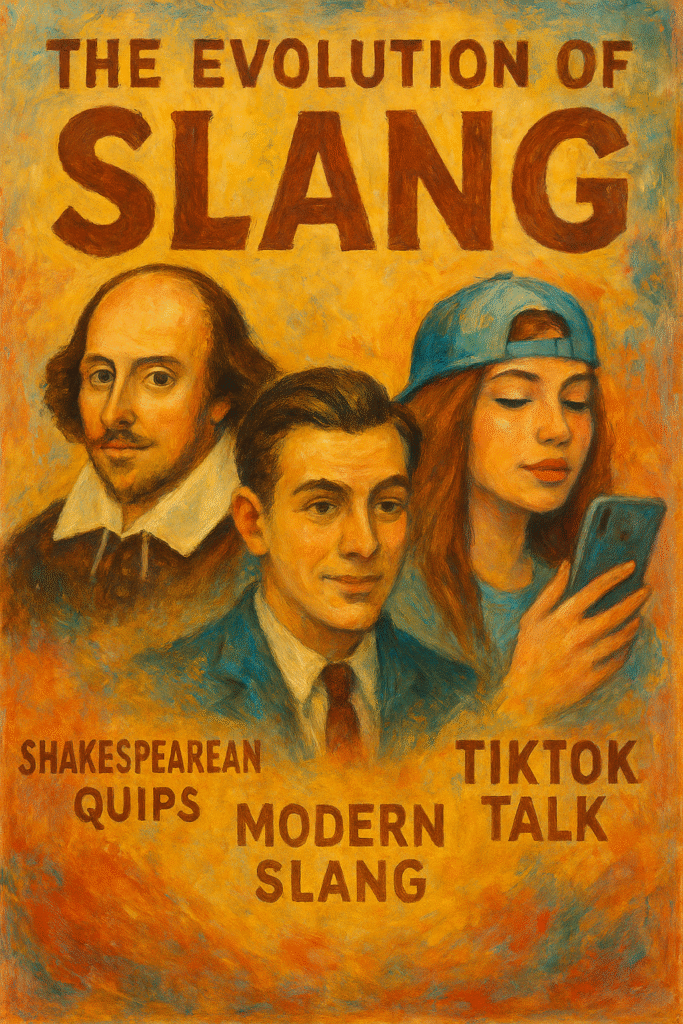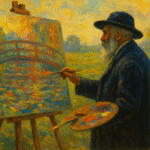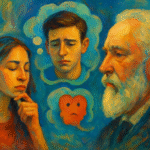Introduction to Slang and Its Importance in Language
Slang is an ever-evolving tapestry woven into the language fabrics of societies around the world. From informal phrases shared among friends to stylized expressions resonating through pop culture, slang serves as a reflection of cultural identity, social dynamics, and linguistic creativity. Understanding the evolution of slang reveals not only the transformation of language itself but also the cultural context that shapes it. In this exploration, we will trace the paths of slang through history, highlighting its importance and vibrant role in the evolution of communication.
Why Slang Matters
Slang is more than mere informal language; it functions as a social tool that fosters connections among groups, marking inclusivity and exclusivity based on shared language. The creation of slang is often a response to societal changes, technological advancements, and shifting cultural norms. By studying slang, one can gain insight into the values, issues, and trends of the time, making it an essential aspect of cultural history.
As we delve into the nuanced journey of slang, we will examine its historical roots, modern-day manifestations, and the role technology plays in its ongoing transformation.
Historical Overview of Slang from Shakespearean Times to Modern Slang
The Birth of Slang
Slang has ancient origins. The term itself can be traced back to the 18th century, yet forms of informal language and colloquial expressions have existed for centuries, long before the word found its way into everyday usage. In England, slang began to coalesce at the edges of society, born out of the need to express oneself in a manner distinct from normed language.
Shakespearean Slang: Creativity and Cultural Commentary
The English playwright and poet William Shakespeare (1564-1616) is often credited with being one of the first to utilize slang extensively in literature, embedding it seamlessly into his works. Shakespeare’s lexicon introduced numerous words and expressions that were previously considered slang, which have since entered common parlance. For example, phrases like “break the ice,” “wild-goose chase,” and “heart of gold” originated in Shakespeare’s works and have become integrated into everyday English.
Moreover, Shakespeare’s use of slang not only reflects the vernacular of his time but also serves as a creative tool to convey character and emotion. Much of his work shines a light on societal norms, love, and the complexities of human experience. This encapsulates how slang functions as a cultural barometer, reflecting contemporary issues in a comedic or dramatic lens.
The Rise of Slang in the 17th and 18th Centuries
During the 17th and 18th centuries, the growth of markets, cities, and social mobility facilitated the exchange of ideas and dialects, further paving the way for the evolution of slang. As a melting pot of cultures, urban environments birthed expressions that deviated from formal language and promised a rich variety of slang. The burgeoning economy led to the emergence of various subcultures, from sailors and soldiers to the bourgeois and the working class, all of whom contributed to the evolving lexicon.
Examples from this era include terms like “penny dreadful” (a cheap publication) and “to hobnob” (to associate with the wealthy). Every term defined a lifestyle, community, or occupation, showcasing how exchanges within society created vibrant new layers of language.
The 19th and 20th Centuries: Slang as a Sign of Change
The Industrial Revolution
The 19th century marked an industrial revolution that dramatically reshaped society. As people moved from rural environments to industrial cities for work, language evolved into more specialized forms to reflect new realities. The emergence of youth culture, especially among those working in factories, gave rise to new slang terms that spoke to the frustrations, joys, and in-between experiences of the working class. Words like “yokel” (a rural person viewed as unsophisticated) gave voice to society’s perceptions of class disparities.
The Jazz Age and the Roaring Twenties
The Jazz Age and the subsequent Roaring Twenties brought a new vibrancy to slang with influences from jazz music, dance, and nightlife. New expressions like “the bee’s knees” (excellent) and “cat’s pajamas” (the height of fashion) emerged as young people sought to carve out a unique cultural identity apart from their predecessors. This age of prosperity and rebellion against norms reflects how slang can act as both revolutionary and subversive. By the 1960s, the hippie movement introduced terms like “far out” and “groovy,” further solidifying the role of slang in youth culture.
Modern Slang: The Age of Technology and Social Media
Slang in the Digital Era
The late 20th and early 21st centuries ushered in a digital revolution, altering not only how we communicate but also the very nature of language itself. Email, online forums, and social media platforms provided new venues for linguistic expression, expanding the boundaries of slang to reach a global audience.
Platforms like Twitter, Facebook, and most notably TikTok have accelerated the spread of slang, introducing terms like “vibe check,” “sksksk,” and “lit.” The rapid-fire nature of social media ensures that specific phrases can enter and exit popular usage within mere months or even weeks.
TikTok Talk: The Current Frontier of Slang
TikTok, in particular, stands as a crucible of contemporary slang, a space where trends can blow up overnight. Hashtags promote viral sounds and catchphrases, forming a unique language shorthand. For instance, phrases like “OK Boomer” emerged as a generational retort, encapsulating cultural tensions between older and younger demographics. Furthermore, the short, punchy format of TikTok videos promotes creativity, leading to a plethora of unique slang that often incorporates memes and visual elements.
The Influence of Globalization on Slang
As communication becomes more global, slang evolves through cultural exchange. For example, the influence of hip-hop culture has led to the incorporation of African American Vernacular English (AAVE) into mainstream language, contributing terms such as “flex” (to show off) and “salty” (feeling bitter). Globalization allows slang to transcend geographical borders, creating a shared linguistic pool while still retaining regional variations.
The Cultural Significance of Slang: Identity and Community
Fostering Group Identity
Slang plays a critical role in fostering group identity. Young people often adopt specific terms to create a sense of belonging and differentiate themselves from others. This incorporation of slang allows for group solidarity while simultaneously acting as a barrier to outsiders. As language evolves, so too do the dynamics of inclusion and exclusion within social groups.
Slang and Social Movements
Moreover, slang often emerges from social movements, conveying shared sentiments and solidarity among marginalized groups. Phrases like “Black Lives Matter” and the abbreviation “FOMO” (Fear of Missing Out) articulate contemporary issues and experiences, allowing communities to mobilize under a common banner. This linguistic evolution showcases how slang can endure and adapt, often becoming pivotal in the advocacy for social change.
Conclusion
Slang remains a vibrant and dynamic aspect of language that serves countless functions in society. From its historical roots in Shakespearean times through the innovative expressions generated on platforms like TikTok, slang reveals our shared human experiences and societal changes in a unique way. Understanding the evolution of slang not only enriches our appreciation for language but also highlights the cultural narratives that shape our world.
FAQ Section
What role do technological advancements play in the evolution of slang?
Technological advancements significantly affect how slang evolves by providing new platforms for communication. Social media, text messaging, and online communities allow slang to spread quickly across different demographics, giving rise to new terms almost instantaneously. The brevity and immediacy of these platforms encourage the use of concise and often humorous language, resulting in innovative slang.
How can understanding slang enhance cross-cultural communication?
Understanding slang can vastly improve cross-cultural communication by recognizing the nuanced meanings and connotations behind informal language. It allows individuals to engage more fully with diverse communities, showing respect and appreciation for their linguistic identity and cultural heritage. Moreover, it helps navigate potential misunderstandings that might arise from the varied interpretations of slang between cultures.
Are there any resources for further exploring the evolution of slang?
Many resources delve into the rich world of slang, including books, podcasts, and online courses on linguistics. Notable books include “Slang: The People’s Poetry” by Michael Adams, and “Wordslut: A Feminist Guide to Taking Back the English Language” by Amanda Montell. Additionally, linguistics-focused podcasts like “Lexicon Valley” explore how language, including slang, evolves in response to culture and society.
How does slang impact formal language and communication?
Slang can influence formal language by introducing new terms and phrases into educated speech and writing. While not traditionally used in formal settings, many slang expressions have made their way into mainstream discourse, reflecting shifting societal norms. Understanding when and how to appropriately use slang can enhance both personal and professional communication, allowing for greater relatability in certain contexts.


